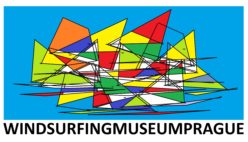Ben Oakley
in collaboration with Windsurfing Museum Prague
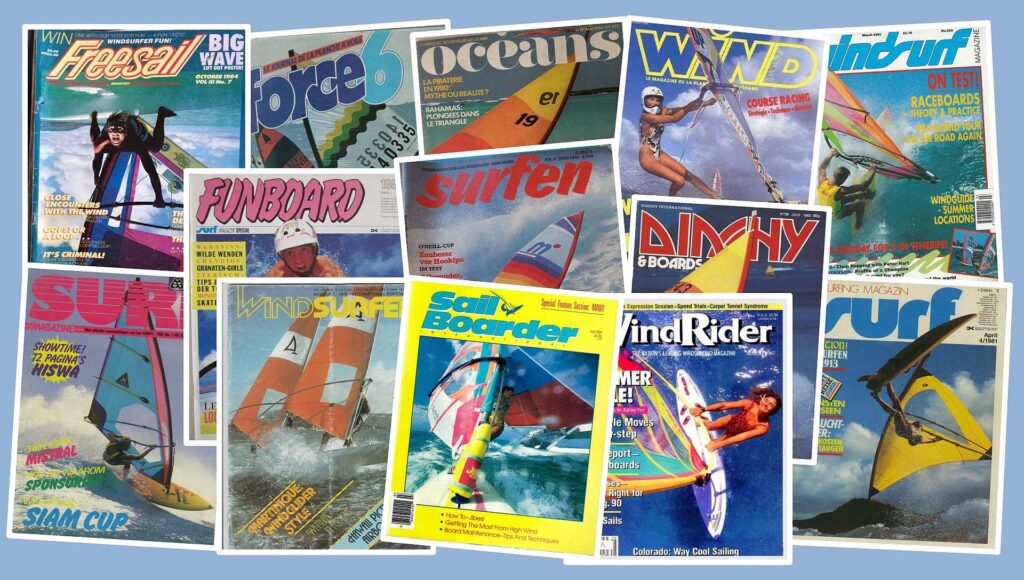
Back to main menu / Expo / Sails catalogue / Boards catalogue / BAJA board / Early Windsurfer Sails – #1 to #1000
Zpět na hlavní menu CZ /
Here are twelve provocative examples, six from Europe and six from USA… do you recognise any? What covers would you chose?
INTRODUCTION
You may remember individual windsurfing photos but in this article we will focus on front cover photos. We include magazine covers and spreads that showed the spirit of windsurfing across USA, France, Germany and UK. Some books are also iconic, so we did select one book cover. Behind each cover there are stories about the vibe and evolution of our sport. Looking at them you can see the sport changing and five of our examples come from just a two-year period of frenzied development. We hope this stimulates memories and perhaps you will think of your own top-3 selection.
#1 – The genesis moment for European windsurfing (1971)
When Bruce Matlack appeared on the cover of the chemical company DuPont’s magazine no one knew that this would be the photo that would spark hundreds of curious minds: ‘what is it?’, ‘how do I get one?’. Boards were shipped, first to Sweden, then Germany, France and further north to Finland. Newspapers started showing photos of the new sport and like spreading ripples on a pond the sport spread across Europe. Soon the ripples became a giant wave when Hoyle Schweitzer signed a deal with the large Dutch company TenCate. They started mass-producing boards in Europe in 1973 and the rest is history.
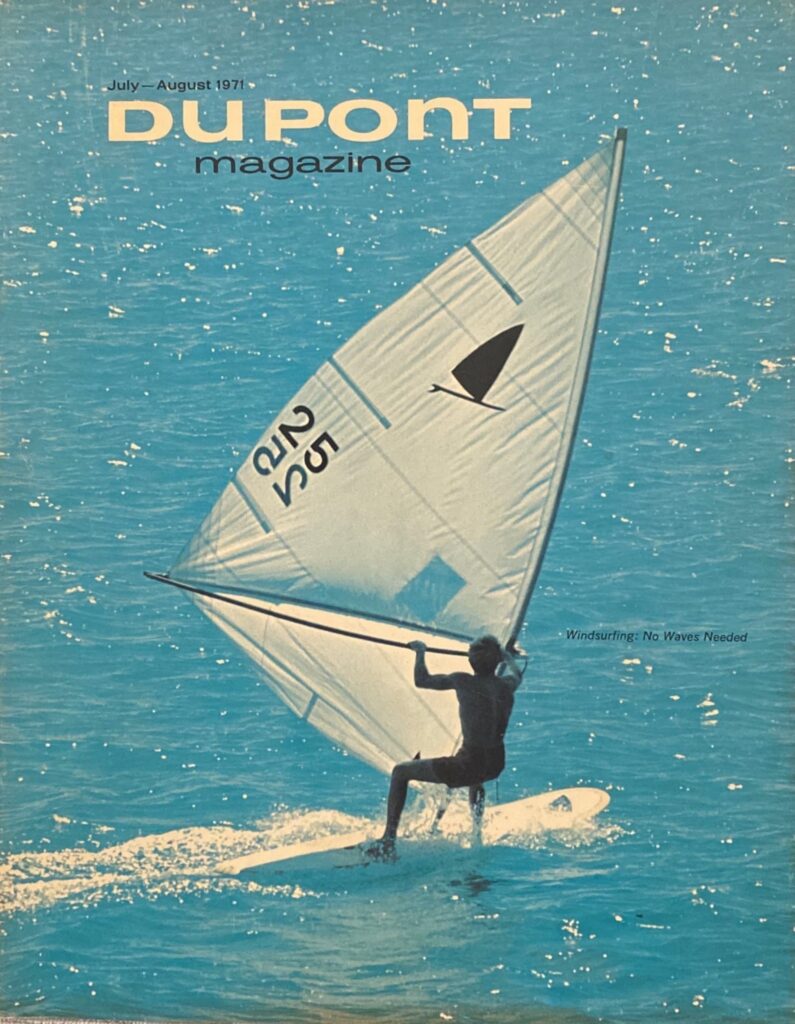
#2 – The radical railride: a new 13-year old star from Hawaii (1976)
At first people were buying into the Californian beach image but then Robbie Naish tried the sport at his home of Kailua Bay, Hawaii (aged 11) and wanted more: this is his first ever cover shot, taken at the 1976 US National Championships at Berkeley, California. At this event, he won a trip to the World Championships where, with 455 others, he raced in one of the biggest ever sailing Championships in the Bahamas. Weighing some 41 kgs. he dominated, showing you did not have to be super strong to be good. The sports beach image started to have a Hawaiian twist as he continued to win and his early Kailua mentors Larry Stanley and Thor Horgan, along with Dennis Davidson became visible in magazines. In this cover the wonderkid stunned the world with the new radical move at the time: the railride. Many of us ended up copying it.

#3 – Two easy innovations for everyone: the head dip and the harness (1977)
What was your first trick on a windsurfer? For many of us it was the head dip and made you feel accomplished and part of the scene. Dennis Davidson, from the Kailua scene, features on this cover capturing the 70s colours and mood with his hairstyle and athleticism. Also, there is a feeling ‘I don’t need to connect the uphaul, just let it flow free’. Let’s not forget the important new development, the chest harness, allowing us all to do a lot more sailing in a lot more wind and helping everyone’s improvement trajectory.
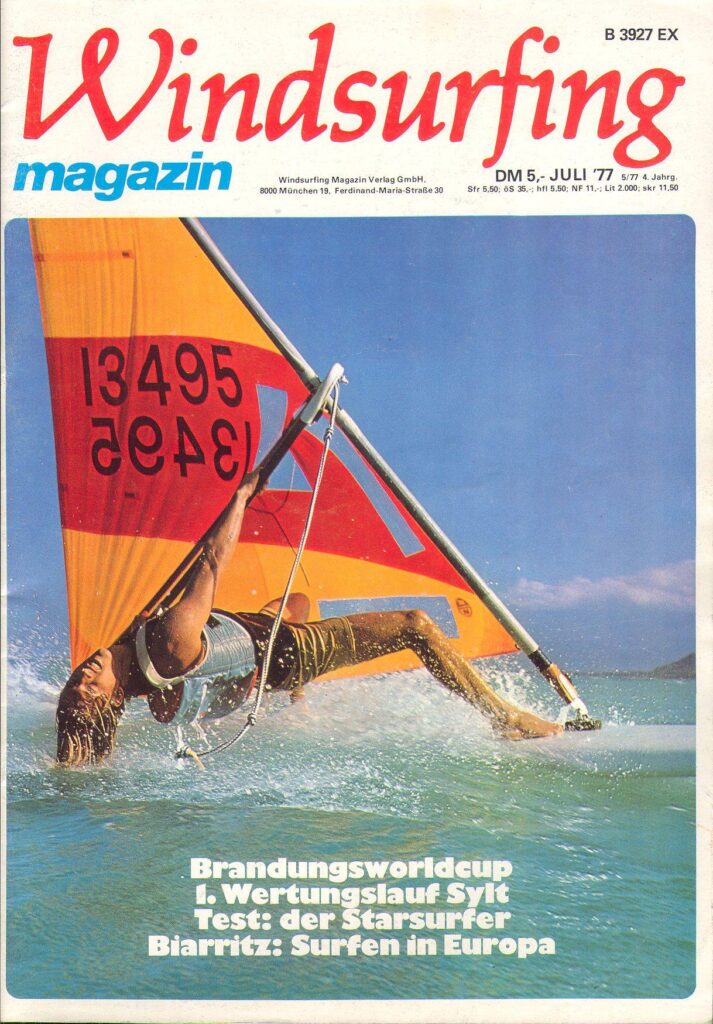
#4 – Europe wakes up to Windsurfing Hawaii (1978)
Photos like this in the waves and high winds had not been seen before in Europe. Larry Stanley recalls: ‘That photo evokes the feeling of following the wind to the Kailua’s fun spots, exhaustion and elation of the highest degree was a daily occurrence. None of us got paid for it, either’. In this pre-internet era photographic slides were sent by post meaning that magazine editors did not know about such the fantastic photos from Hawaii. Later in 1978, the Surf magazine (Germany) editor paid $10,000 in cash (worth about $47,000 today) to photographer Steve Wilkings on their visit to Hawaii. This secured 120 striking shots of Mike Horgan, Larry Stanley and Windsurfing Hawaii colleagues using their new innovations in the surf. The editor later said, ‘This triggered a real boom … the circulation skyrocketed, we showed a [Hawaiian] dream … it created a frenzy’. The readership of Surf (1977- 1982) expanded by x6 and magazines started promoting the spectacular side of the sport.

#5 – You remember your first windsurfing book forever (1979)
When we become hooked on windsurfing we want to consume everything about it … including many of the fantastic books from the 70s and 80s. How strong is the memory of your first windsurfing book? For many in Europe the German publisher Delius Klasing was influential because they created many books and also started Surf magazine in 1977. For many English speakers in the late 1970s this cover was their first book. The photograph is saying: ‘this is strong wind excitement’. Glenn Taylor sailed in San Francisco Bay and the publisher is ‘Bay Windsurfing’, his shop and instruction business. He was a physics graduate who used his understanding of mechanics to explain how windsurfing worked in print and in numerous TV programmes.
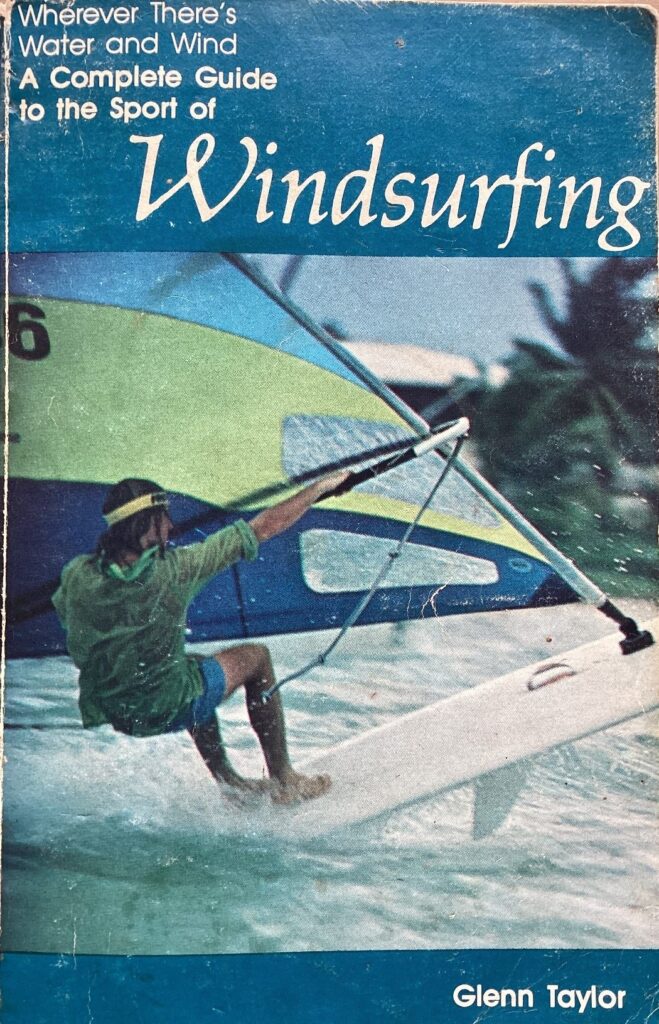
#6 – Female riders focus a spotlight on the cool new sport (1980)
Women boosted the interest and media attention on the new arrival on the beach scene. The baggy sail, wooden boom and daggerboard all feature prominently in this cover. Trisha Walsh, in San Diego, is the sailor expertly controlling this early equipment. Trisha was an early example of an accomplished windsurfer who contributed to promoting the sport just at the time when TV companies were starting to transition to using colour. She featured alongside windsurfing personalities Lori Swatek, Melanie Mitchell, Glenn Taylor and others in one of the first mass market TV adverts to use windsurfing: the 1978 Labatt’s beer TV commercial (you can find it on YouTube).
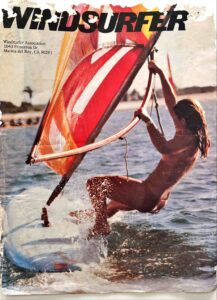
#7 – The [Windsurfer] Rocket ship arrives in Europe (1980)
The early designs of the Windsurfer Rocket were first seen in 1977/8 and soon it was rolled out into production in Europe (TenCate) as well as USA. At the time it was the first production board with footstraps and a storm daggerboard. When this cover was published on Facebook there was some detective work to do since the sail is a standard Windsurfer sail, the rider Jacques Bouhana is wearing a Mistral harness and the sticker at the back of the board (for Wind magazine) all have potential to distract from its identification as the Rocket board. Mass produced boards designed for jumping had arrived … but by 1980 the sport was already evolving very, very fast.

#8 – New races, new shapes and photos: The Pan Am Cup years (1980)
The Pan Am Cup in Hawaii has a mythical status. It was a new race format (just in high winds) which demanded new thinking and because all the best sailors in the world assembled it attracted a lot of attention and many photographers. This 1978-83 period eventually led to the professional World Cup (the ’78 event was not Pan Am sponsored). In this photo we see shorter booms being used, high clew sails and some with full top battens. A year later came pintail board shapes, retractable daggerboards, the first mast tracks and multiple foot strap positions. Pan Am boards, as they became known, led to raceboards of which the Mistral One Design became Olympic equipment (1996-2004).
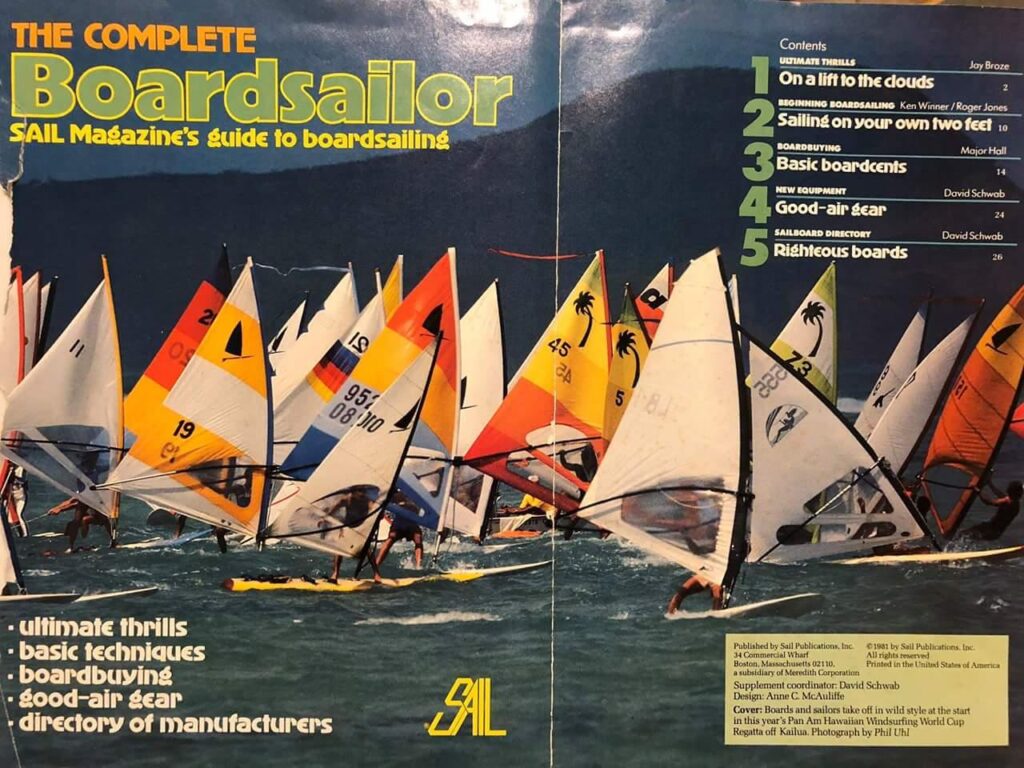
#9 – The big breakthrough: shortboards arrive (1981)
Design progression was already moving rapidly but then another big breakthrough was announced in this cover through Mike Waltze’s story and other innovators contributions. Short surfboard-like designs made true wave riding possible and boards more controllable in strong winds. With less board in the water higher speeds were possible which led to a significant shift towards performance windsurfing.
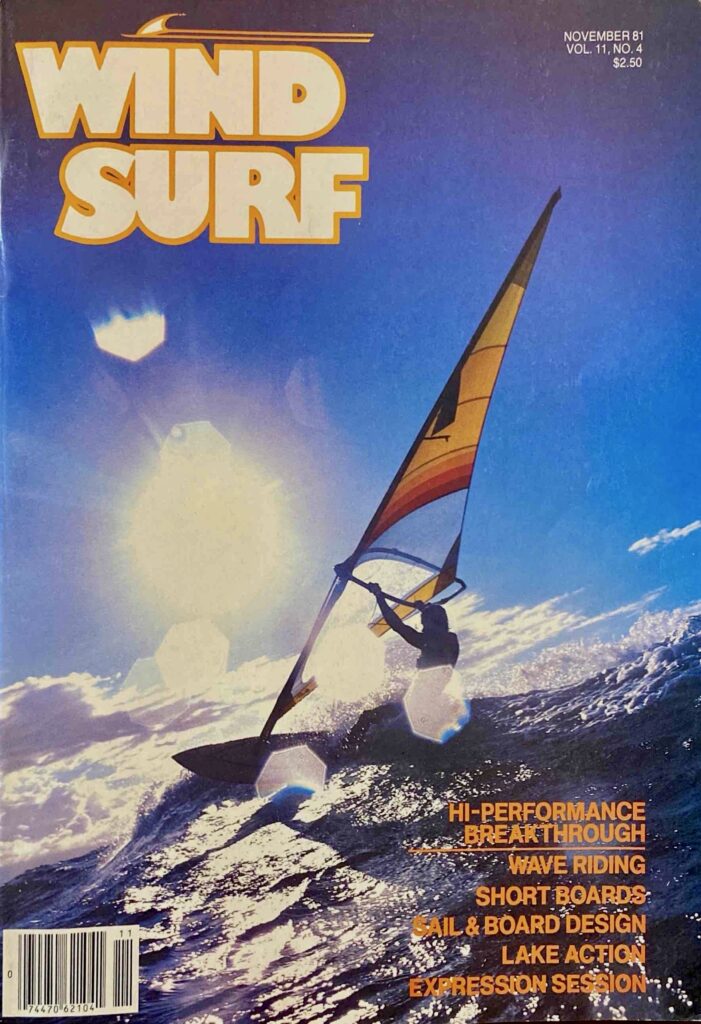
#10 – New technologies, new speed record (1983)
A sign of how quickly technologies were evolving in the early 80s was the progression of the 500m speed record. Derk Thijs had achieved 19.1 knots in 1977 and here on this cover just six years later at the same location (Weymouth, UK), Fred Haywood set a 30.83 knots record. Full battens, seat harness, special mast/boom/board and as well as Fred’s skills all made the difference. In the next few years new speed course locations were discovered, or created, which further increased the record. E.g., Sotavento and the trench dug at Saintes Maries de la Mer. By 1988 the record had reached an incredible 40.48 knots (1988, Erik Beale).

#11 – A leading queen of speed (1986)
Here we see Jenna de Rosnay in speed sailing mode. She raised her own 500m record several times, achieving 27.09 knots in 1984. Her Windsurfing Hall of Fame entry neatly summarises her appeal: ‘She’s broken the internet many more times than [records] … Gracing the covers of major magazines, Jenna drew the eyes of the world, and to our sport. She also drew a great amount of respect for her artistic design skills and resolve in life … She was part of the cohort of female sailors that drew more women to the sport.
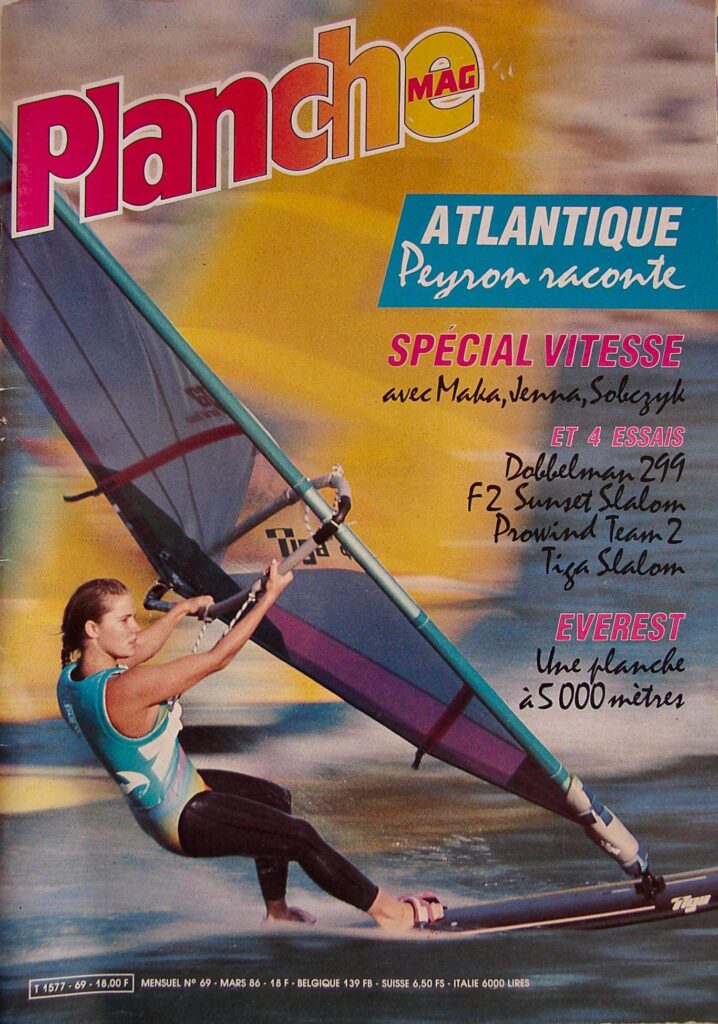
#12 – From inland Austria to Maui with radical shapes
Seeing this cover you ask yourself, ‘How did he do that with the flowers?’. Magazines and video producers all loved the unusual aerial shapes he could pull and his willingness to tackle extreme conditions. Mickey Eskimo (originally Ribolitz) came from Vienna and arrived in Maui via Lake Garda and Australia. He created a distinctive riding and jumping style. He also became equally known for his graphic art skills which were used on the Bic board range (late 80s) and helped establish the Chiemsee brand with its unique brightly coloured dotted kangaroos motif.
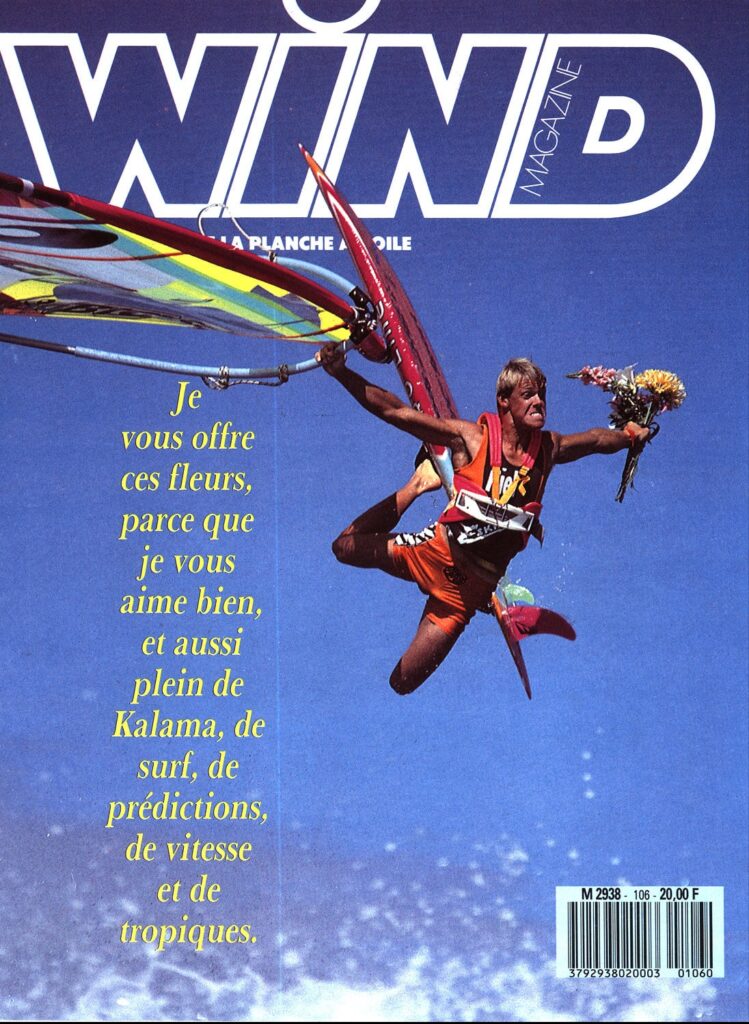
FINAL THOUGHTS
So much development in two decades, it was a whirlwind of change and colour. What is the best front cover from your windsurfing biography? Or, if you have other choices you would prefer to see please share your top front cover(s). Send your comment or share your cover(s) to this email ws1975@post.cz .
This project would not have been possible without Pierre Coupal. He is the top collector of front covers and his attention to detail and mission to capture the past for future generations enthuses many.
FOOTNOTES
- Front cover selection panel: Windsurfing Museum Prague, Ben Oakley and Pierre Coupal
- Scans #2 and #9 courtesy of Bruce Matlack and Carla Laney www.OldSchoolWindsurfing.com
- Scan #4 courtesy of SURF Magazine archives www.surf-magazin.de/en/windsurfing/scene-and-events/review-these-were-the-highlights-in-surf-6-1978/
- Scan #11 courtesy of Dimitris Savidis´s blog: hitthewave.wordpress.com/
- Scan #12 courtesy of Maui Glory Days: www.mauiglorydays.com/mike-eskimo.html
If you liked this Ben´s story, we recommend you his another original contributions Polyethylene hero and the Windsurfer-Missiles link & BAJA board (1968-1971)
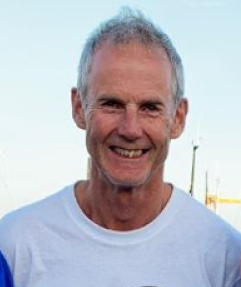
Author´s BIO:
Ben is a Professor at the Open University (UK) where he established the online study of sport and has written for FIFA, UNICEF and the BBC. His research on windsurfing’s rapid global diffusion is freely available in the International Journal of the History of Sport. Previously he worked as UK National Coach and attended the Olympic Games in 1988 and 1992 in this role. Originally he raced Windsurfer, Open and Mistral Classes at World Championships (1980-85).
Provided for Non-Commercial and Educational Use only. If you really feel the need to copy and repost images and museum web page content, please respect credits & sources (at least as they are stated).
We try to acknowledge the sources of used images and documents and give credits to those who deserve it. Please let us know if you find any omissions or mistakes. Thanks.
